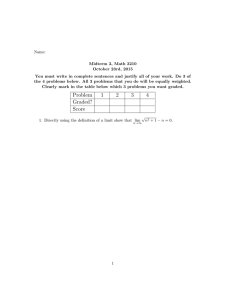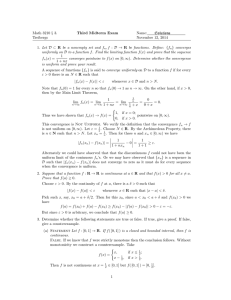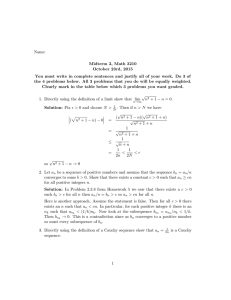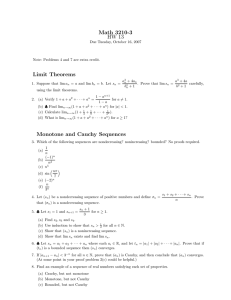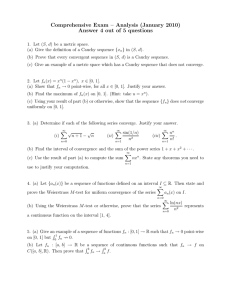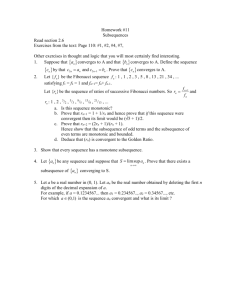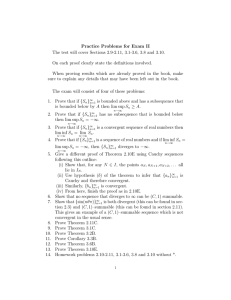Math 512A. Homework 3. Solutions
advertisement
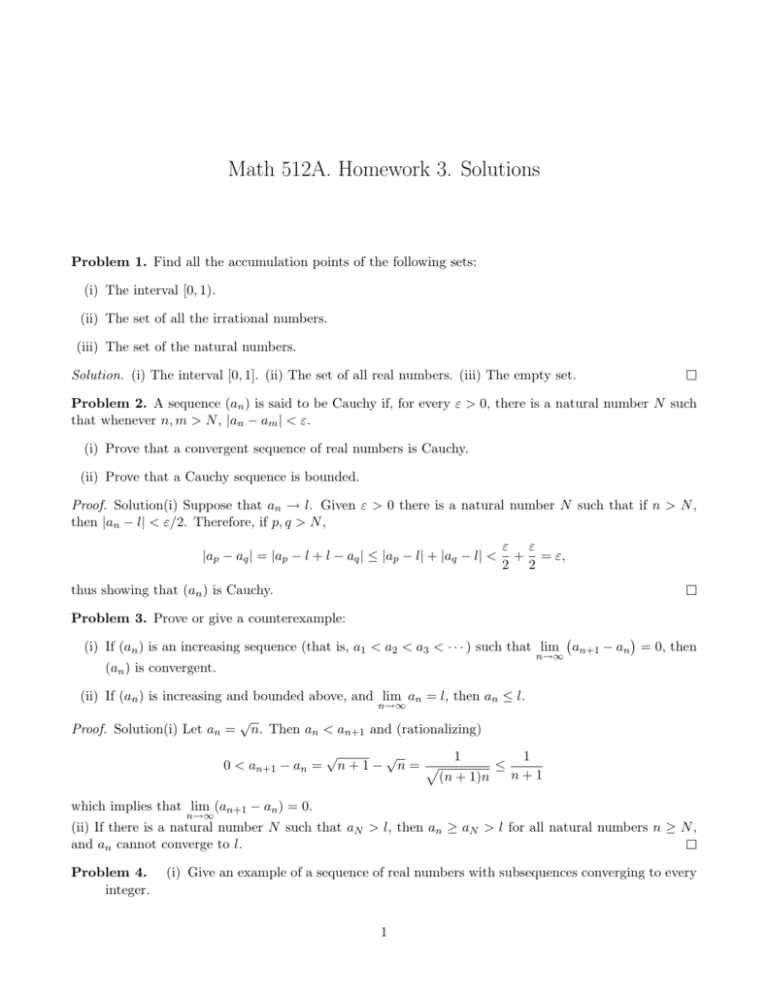
Math 512A. Homework 3. Solutions
Problem 1. Find all the accumulation points of the following sets:
(i) The interval [0, 1).
(ii) The set of all the irrational numbers.
(iii) The set of the natural numbers.
Solution. (i) The interval [0, 1]. (ii) The set of all real numbers. (iii) The empty set.
Problem 2. A sequence (an ) is said to be Cauchy if, for every ε > 0, there is a natural number N such
that whenever n, m > N , |an − am | < ε.
(i) Prove that a convergent sequence of real numbers is Cauchy.
(ii) Prove that a Cauchy sequence is bounded.
Proof. Solution(i) Suppose that an → l. Given ε > 0 there is a natural number N such that if n > N ,
then |an − l| < ε/2. Therefore, if p, q > N ,
|ap − aq | = |ap − l + l − aq | ≤ |ap − l| + |aq − l| <
ε ε
+ = ε,
2 2
thus showing that (an ) is Cauchy.
Problem 3. Prove or give a counterexample:
(i) If (an ) is an increasing sequence (that is, a1 < a2 < a3 < · · · ) such that lim an+1 − an = 0, then
n→∞
(an ) is convergent.
(ii) If (an ) is increasing and bounded above, and lim an = l, then an ≤ l.
n→∞
Proof. Solution(i) Let an =
√
n. Then an < an+1 and (rationalizing)
0 < an+1 − an =
√
n+1−
√
n= p
1
(n + 1)n
≤
1
n+1
which implies that lim (an+1 − an ) = 0.
n→∞
(ii) If there is a natural number N such that aN > l, then an ≥ aN > l for all natural numbers n ≥ N ,
and an cannot converge to l.
Problem 4.
integer.
(i) Give an example of a sequence of real numbers with subsequences converging to every
1
(ii) Give an example of a sequence of real numbers with subsequences converging to every real number.
Proof. Solution (i) 0, −1, 0, 1, −2, −1, 0, 1, 2, −3, −2, −1, 0, 1, 2, 3 . . . , and so on. Each integer appear
infinitely many times in this sequence and thus you can extract a subsequence which converges to any
integer (in fact, a constant sequence).
Problem 5. Prove that if the subsequences (a2n ) and (a2n+1 ) of a sequence (an ) of real numbers both
converge to the same limit l, then (an ) converges to l.
Proof. Solution Given ε > 0 there are natural numbers Ne and No such that if n is an even natural
number and n > Ne , then |an − l| < ε, and if n is an odd natural number and n > No , then |an − l| < ε.
Let N = max{Ne , No }. If n is a natural number and n > N , then n is either even and > Ne , or n is odd
and > No . In either case, |an − l| < ε.
2
